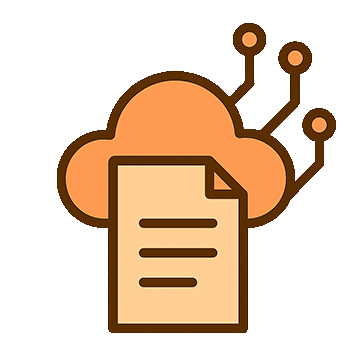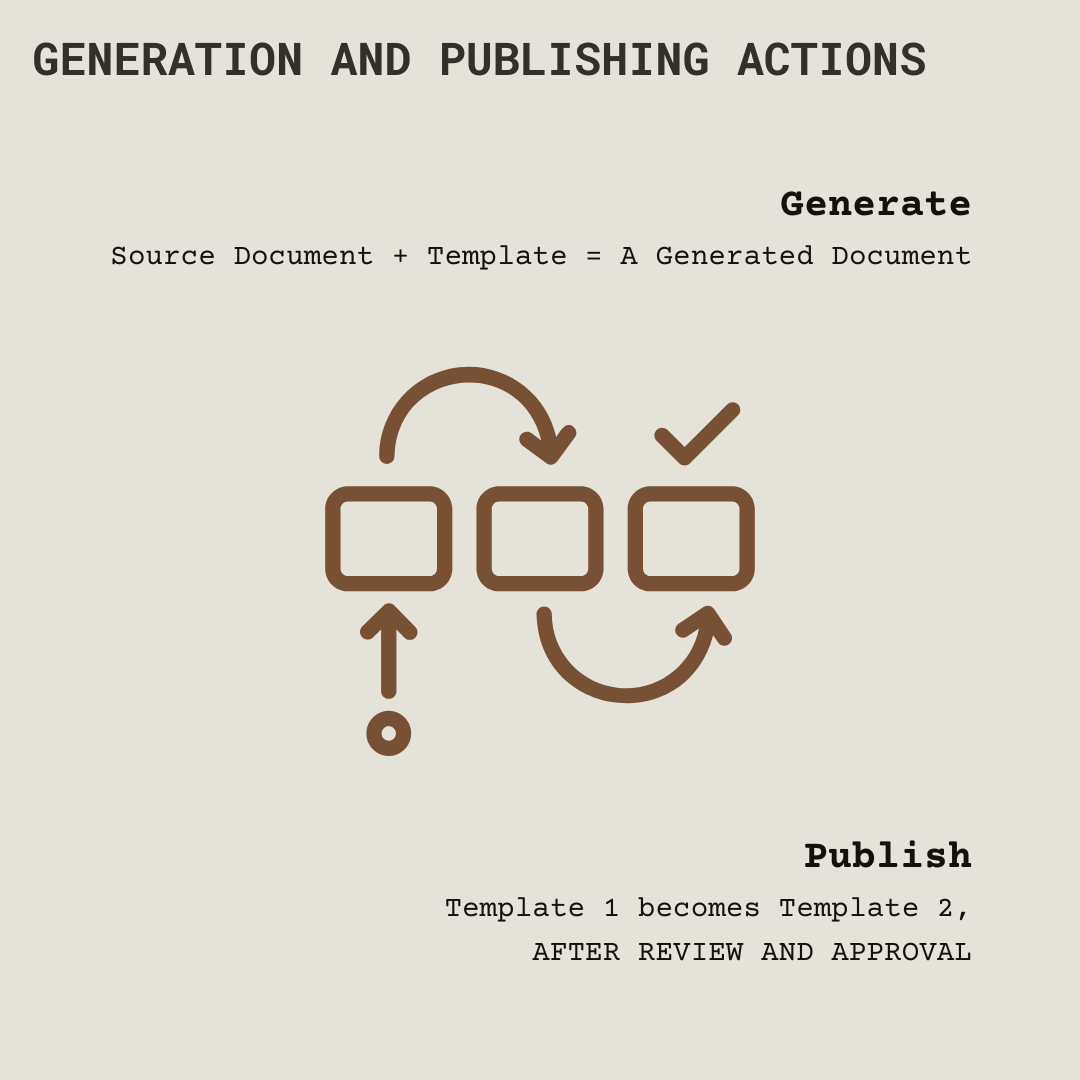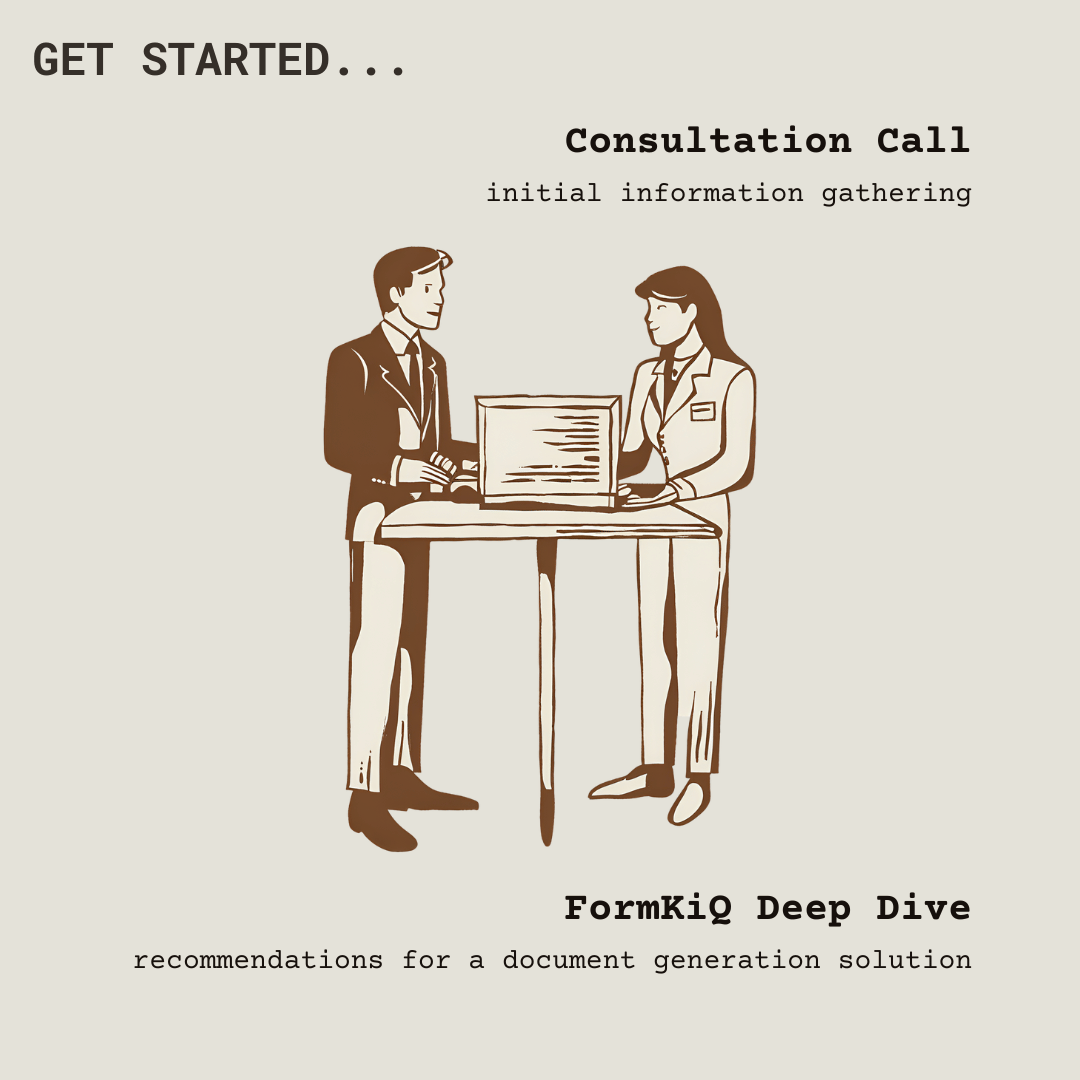Streamlining Processes with Intuitive Interfaces
In addition to being secure and scalable, a good document and information management system is designed around streamlining processes.
One of the best ways to achieve this is through intuitive interfaces, whether that’s a visual user interface or a clear and consistent API.
At FormKiQ, we’ve developed a flexible platform that can provide document and enterprise content management, but one outstanding feature has been brought up a few times: generating documents.
Often this is mentioned along with AI, as generative AI is a tool that is starting to play a major part in many business processes; for instance, we use gen AI to extract metadata from unstructured or semi-structured documents, such as legal contracts and correspondence. We also have other gen AI projects around data mapping and knowledge management.
But document generation doesn’t always need AI, especially when using pre-existing data and pre-defined templates. In those situations, a document management system with access to consistent metadata can take templates from MS Word or other sources and create output documents that meet requirements.
And while the cost of AI is trending downward per individual use, the increase in processes using AI means that AI spend will increase significantly in the next few years for most organizations.
So a document generation strategy that uses AI only when necessary can be noticeably more cost effective.
The Challenges of Document Generation
Despite some pretty large differences across industries, regions, and organization sizes, document generation often comes with the same challenges:
-
Time-Consuming Processes:
Creating documents manually is often a slow and labor-intensive task. Employees must repeatedly enter the same information into different documents, which takes valuable time away from more strategic activities.
-
Inconsistency:
Without standardized templates, documents can vary significantly in format and style. This inconsistency can lead to confusion, miscommunication, and a lack of professionalism in business correspondence and reporting.
-
Human Error:
Manual entry increases the risk of mistakes, from typos and formatting issues to incorrect data entry. These errors can have serious consequences, such as financial discrepancies or compliance violations.
-
Lack of Scalability:
As businesses grow, the volume of required documentation increases. Manual processes struggle to keep up with this demand, leading to bottlenecks and delays.
-
Difficulty in Managing and Updating Template Documents:
Keeping track of various template document versions and ensuring they are updated with the latest information can be challenging. This can result in outdated or inaccurate documents being used within the organization.
Providing a Process that Solves These Challenges
FormKiQ Pro/Enterprise aims to solve every one of these challenges through two new document actions, both accessible through the FormKiQ API, FormKiQ Console, and through FormKiQ’s workflows, the Generate Action and the Publish Action.
The Generate Action
FormKiQ is designed to streamline and enhance document and information management by storing and organizing both documents and entities, such as companies or cases, each enriched with metadata. This structure is crucial for enabling consistent and accurate document generation through the use of templates.
Templates, whether created in MS Office or other tools such as HTML or Google Drive, are designed to include placeholders for this metadata. When generating a document, FormKiQ automatically populates these placeholders with the corresponding metadata from both documents and entities, using a document’s relationship within its related entities, defined using a document’s attributes.
By triggering a “generate” action, whether independently or as part of a workflow, the document and an assigned template are combined to create a document in the desired output format, such as PDF.
For example, an invoice can be generated using a JSON document that provides a list of items, quantities, and prices. This document could have a specific customer, with a related company entity, stored as one of its attributes.
An invoice template would exist, whether within FormKiQ or in a connected system, such as Office Online, SharePoint, or Google Drive; this template would include markup for placeholders, using our standard double curly bracket markup or a customized markup defined in the FormKiQ Site Settings.
A workflow would then be created; this workflow would be triggered in one or more ways, such as an external application, from the FormKiQ console, or through a ruleset that would check incoming documents for a match with any invoice JSON source documents.
The workflow would run the “generate” action, where it takes the invoice source document and the specified invoice template and generates the output document. That output document could then be accessed through its own workflow, through the FormKiQ API, or through the FormKiQ Console.
This document generation process is efficient and scalable, being able to handle millions of documents if needed, and the flexibility of FormKiQ means that there is no limitation on the number of templates that can be used, and any validation needed to ensure complete and accurate information is included in the template can be configured at the required level of granularity.
Additionally, the template management itself can be powered by FormKiQ through another action, the Publish action.
The Publish Action
Templates require periodic reviews and updates, and resulting changes can lead to a lack of clarity on which template is the current, approved version.
By utilizing a workflow that includes document review, approval, and publishing, templates can be modified, and the approved modification can then be published, creating a new version that will automatically be used going forward in document generation.
As well, the process of the changes and approval will be available for review and auditing, and previous versions of the template will be retained in history.
This periodic review will soon be available via scheduled triggers, where a document can have a specific trigger created at a one-time or recurring interval. A template could then have a scheduled interval for triggering a workflow that sends out a reminder notification, or one that kicks off an entire template review process.
(This is also an important feature for our contract management functionality, allowing contract documents to have scheduled triggers for important contract dates.)
Advanced Document Generation
Of course, many organizations have very specific generation needs, and some of those needs require advanced functionality such as formulas, retrieving data from external systems, or conditional rules for which data and branding to include.
FormKiQ’s flexible workflow and document generation features enable each organization to determine the best way of handling these advanced requirements.
In some cases, it makes sense to create a workflow action to calculate a formula beforehand, and store that formula result as one or more attributes within the source document; this same model could be used for branching a workflow to run separate “generate” actions with separate templates.
In other cases, it makes sense to place formulas and conditions within the template itself using specialized markup.
For external data, the data could be imported by the workflow in advance, also stored as one or more attributes, or the output document could be sent to an external system where it could be treated as a template itself, with additional data added through that system’s process.
It’s possible to do any combination of these actions in a FormKiQ workflow, ensuring that FormKiQ can work within the existing processes and requirements, rather than requiring an organization to shoehorn its operations into a rigid software package.
How to Get Started with Scalable, Flexible, and Cost Effective Document Generation
The first step is to reach out for us to determine what combination of FormKiQ’s features may work best for your organization and its processes.
We can start with a consultation call for initial information gathering, and then follow that up with a deep dive, where we highlight our recommendations for how FormKiQ can provide a document generation solution that meets your organization’s specific needs.
Because FormKiQ is an API-first platform that deploys directly into your AWS cloud account, it provides your organization with the security and control it needs while benefiting from our advanced document generation capabilities.
If you think this makes sense for your organization, please
reach out and let us know,
and we can start discussing how FormKiQ's document generation functionality can work for you.
 LATEST: The Complete Guide to Cloud Document Management: Why Architecture Matters Cloud-native vs. cloud-hosted: why architecture determines cost, compliance, and capabilities
LATEST: The Complete Guide to Cloud Document Management: Why Architecture Matters Cloud-native vs. cloud-hosted: why architecture determines cost, compliance, and capabilities FormKiQ vs. Off-the-Shelf Software and Less Flexible SaaS When is FormKiQ a better choice than Off-the-Shelf Software and Less Flexible SaaS?
FormKiQ vs. Off-the-Shelf Software and Less Flexible SaaS When is FormKiQ a better choice than Off-the-Shelf Software and Less Flexible SaaS? FormKiQ vs. Building It Yourself How does FormKiQ save time over custom in-house solutions?
FormKiQ vs. Building It Yourself How does FormKiQ save time over custom in-house solutions? Use Cases FormKiQ works for small and large workflows, across all verticals and industries.
Use Cases FormKiQ works for small and large workflows, across all verticals and industries. FormKiQ For Teams Find out how FormKiQ can work for your team
FormKiQ For Teams Find out how FormKiQ can work for your team FormKiQ For Industries Discover the advantages FormKiQ can bring to your industry
FormKiQ For Industries Discover the advantages FormKiQ can bring to your industry Blockchain and Decentralized Storage Leverage web3 technologies including proof of work and distributed systems for document control and data privacy
Blockchain and Decentralized Storage Leverage web3 technologies including proof of work and distributed systems for document control and data privacy Content and Digital Asset Management Integrate with your preferred web content management system while leveraging FormKiQ for managing your digital assets
Content and Digital Asset Management Integrate with your preferred web content management system while leveraging FormKiQ for managing your digital assets Document Management Module Integrate all of the required functionality of a document management system into an existing software solution
Document Management Module Integrate all of the required functionality of a document management system into an existing software solution Integration with QMS or LIMS Add missing functionality for your Quality Management or Laboratory Information Management by integrating with FormKiQ
Integration with QMS or LIMS Add missing functionality for your Quality Management or Laboratory Information Management by integrating with FormKiQ Job Application Form Receive applications, including cover letter and resume attachments, and import into an existing HR Management System
Job Application Form Receive applications, including cover letter and resume attachments, and import into an existing HR Management System Legal Discovery Tool Find information quickly by combining full-text search with AI-powered document classification
Legal Discovery Tool Find information quickly by combining full-text search with AI-powered document classification The Paperless Office: Digital Document Processing Collect, process, and store paper and digital documents, allowing for archival, integration, and future recall
The Paperless Office: Digital Document Processing Collect, process, and store paper and digital documents, allowing for archival, integration, and future recall Product Leasing System Process client lease applications, including a credit check and approval workflow
Product Leasing System Process client lease applications, including a credit check and approval workflow Company-Wide Break down the silos in your organization with a centralized control center for documents, ready for integration with any and all systems
Company-Wide Break down the silos in your organization with a centralized control center for documents, ready for integration with any and all systems Engineering and Product Reduce development time and agony with battle-tested components for your applications
Engineering and Product Reduce development time and agony with battle-tested components for your applications Finance and Accounting Process paper and electronic invoices and receipts, ready for integration with your important systems
Finance and Accounting Process paper and electronic invoices and receipts, ready for integration with your important systems HR and Recruiting Build and support your people across the organization by integrating with your essential tools
HR and Recruiting Build and support your people across the organization by integrating with your essential tools IT and InfoSec Provision a secure document store with the encryption and controls needed for compliance and protection
IT and InfoSec Provision a secure document store with the encryption and controls needed for compliance and protection Legal Manage and safeguard contracts and other essential documents across systems
Legal Manage and safeguard contracts and other essential documents across systems Marketing Add better discovery and reliability to digital assets and other essential content, while enabling integration with a web content management system
Marketing Add better discovery and reliability to digital assets and other essential content, while enabling integration with a web content management system Sales Keep track of sales assets and contracts inside and outside of your CRM and other tools
Sales Keep track of sales assets and contracts inside and outside of your CRM and other tools Accounting, Financial Services, and FinTech Standardize financial documents, metadata, and workflows across systems, teams, auditors, and clients
Accounting, Financial Services, and FinTech Standardize financial documents, metadata, and workflows across systems, teams, auditors, and clients Education, Training, and EdTech Integrate Learning Management Systems with other essential applications and tools
Education, Training, and EdTech Integrate Learning Management Systems with other essential applications and tools Healthcare, Life Sciences, and MedTech Combine secure and compliant records management with laboratory information management systems
Healthcare, Life Sciences, and MedTech Combine secure and compliant records management with laboratory information management systems Law Practices and Legal Services Ensure efficient legal discovery and case management
Law Practices and Legal Services Ensure efficient legal discovery and case management Logistics and Transportation Provide a robust and customized solution for fleet management or other logistics needs
Logistics and Transportation Provide a robust and customized solution for fleet management or other logistics needs Manufacturing, Production, and Utilities Control and distribute essential documents and standard operating procedures within and between facilities, partners, and clients
Manufacturing, Production, and Utilities Control and distribute essential documents and standard operating procedures within and between facilities, partners, and clients Online Entertainment, Gaming, and Gambling Provide the required compliance documents to partners, customers, and government agencies
Online Entertainment, Gaming, and Gambling Provide the required compliance documents to partners, customers, and government agencies Professional and Technical Services Ensure that clients, inspectors, and subcontractors are aligned with consistent document control
Professional and Technical Services Ensure that clients, inspectors, and subcontractors are aligned with consistent document control Tech Startups Build robust document management functionality into your disruptive product
Tech Startups Build robust document management functionality into your disruptive product








